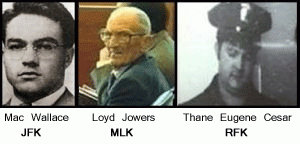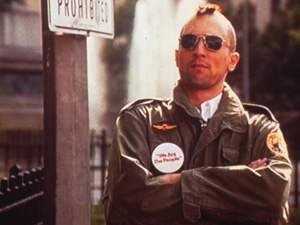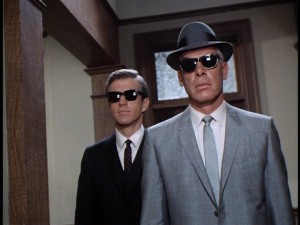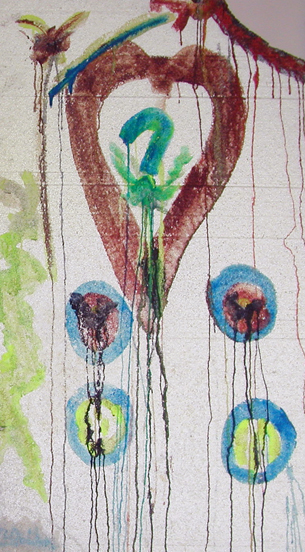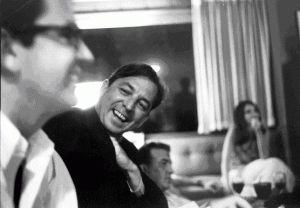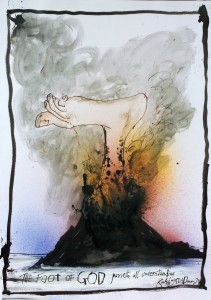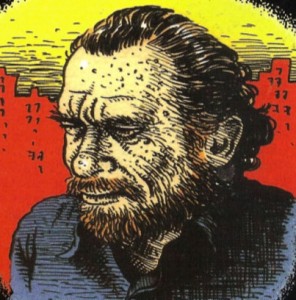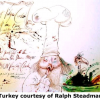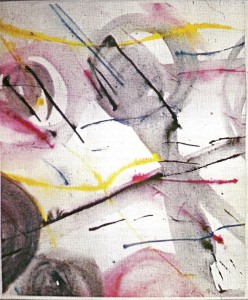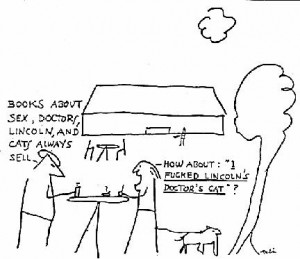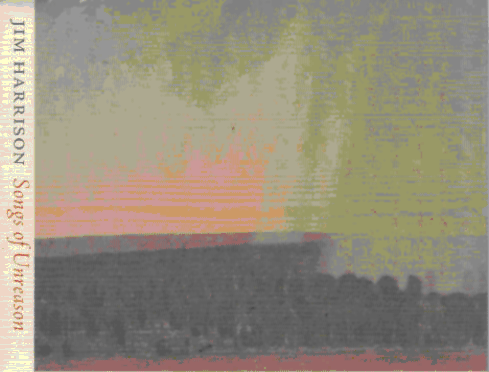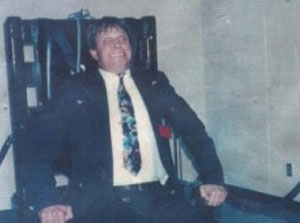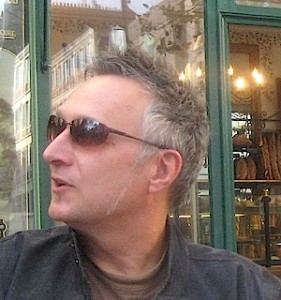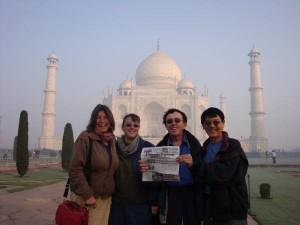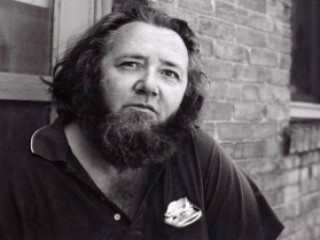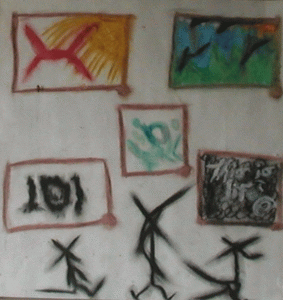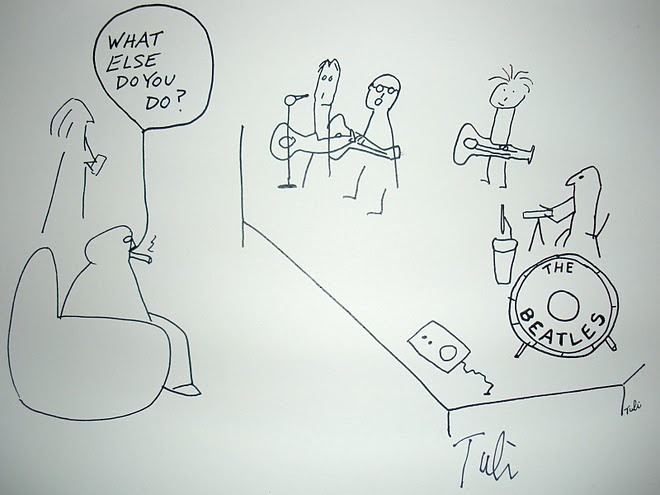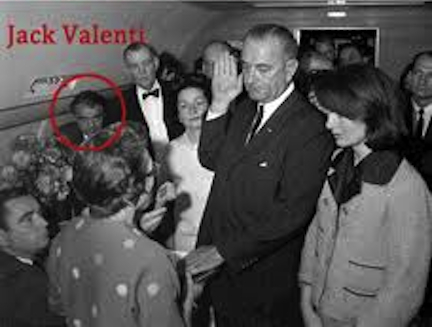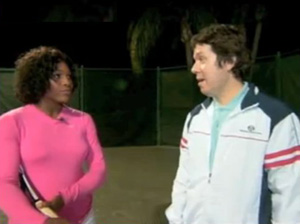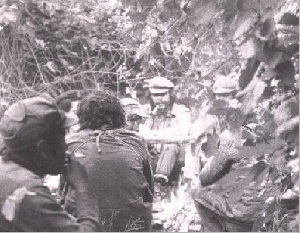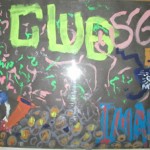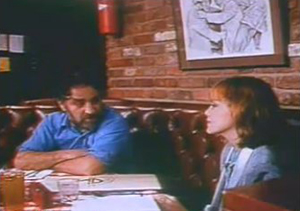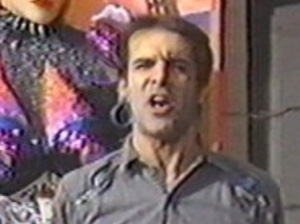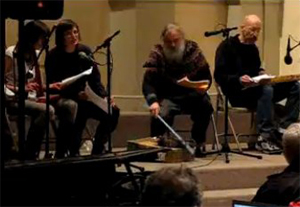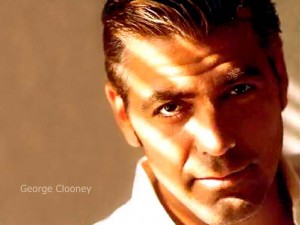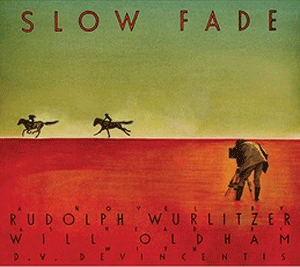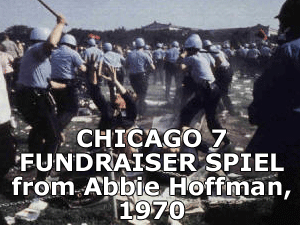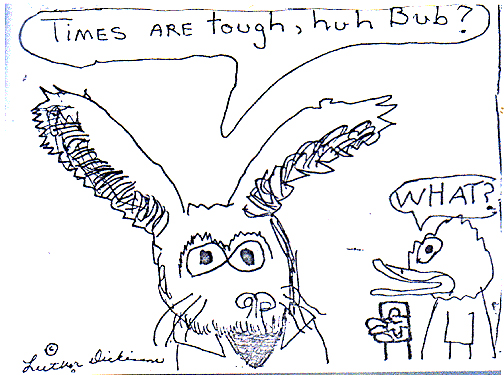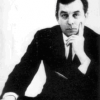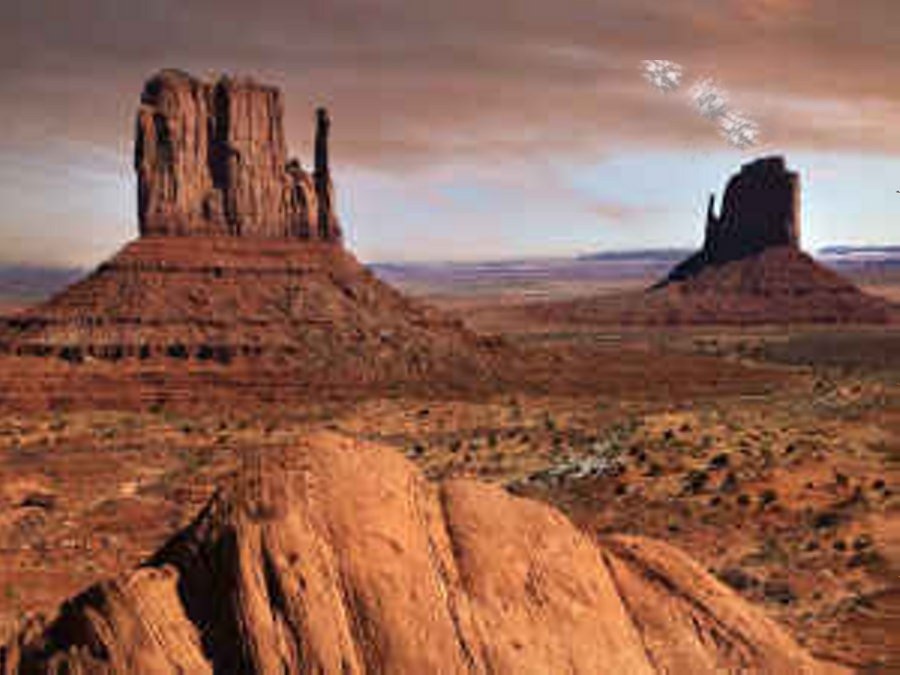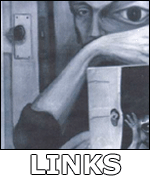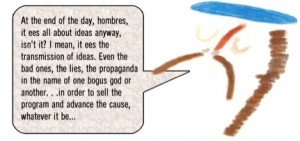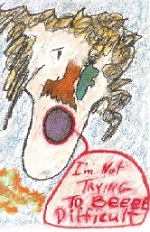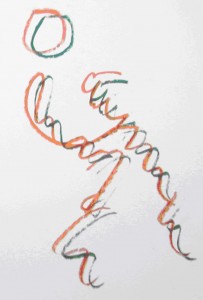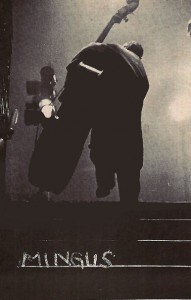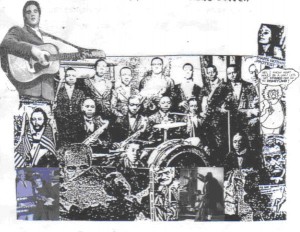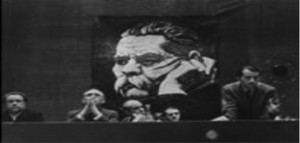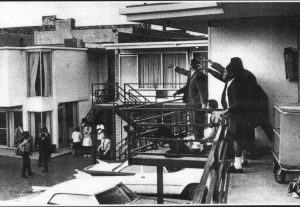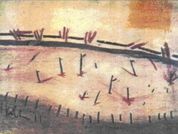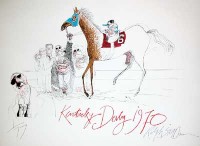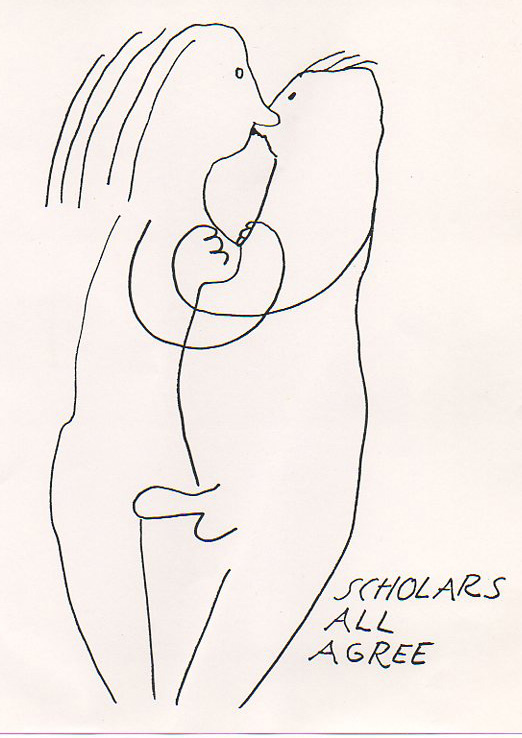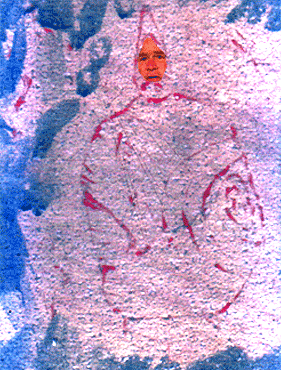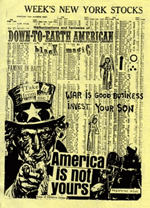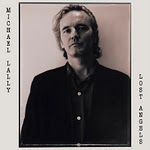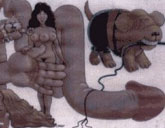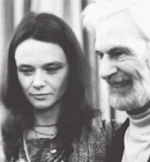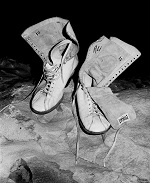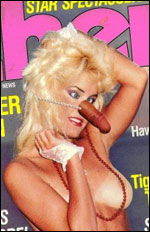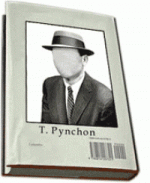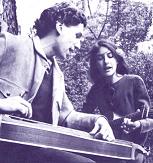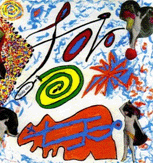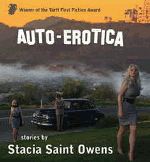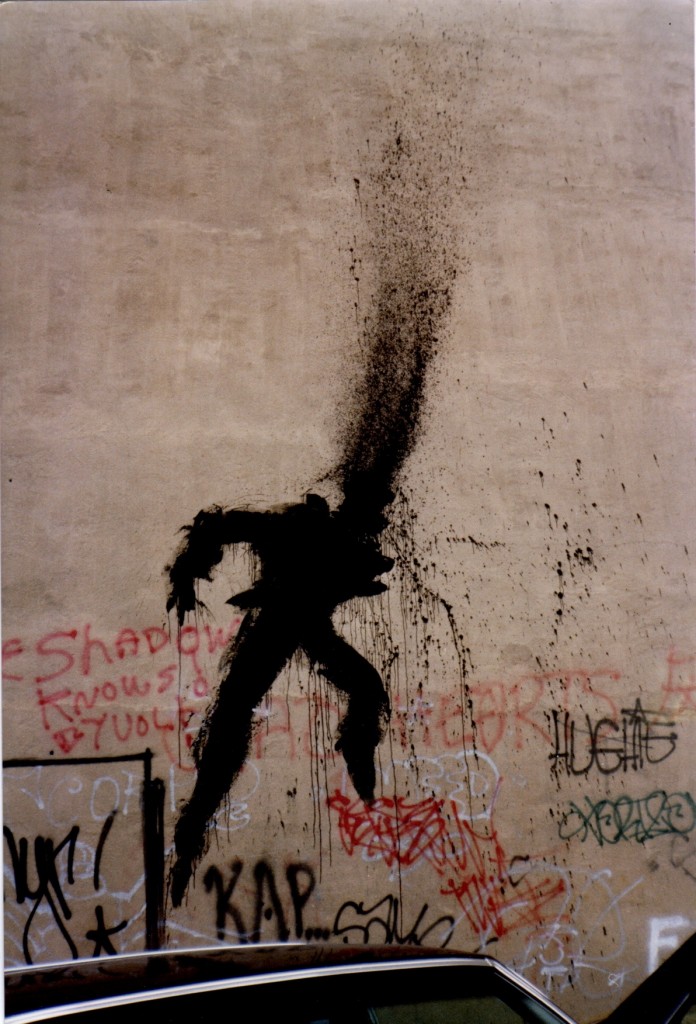Renfreu Neff’s
SLEEPING AT THE MOVIES
Naps are God’s way of editing.
Last year’s, or was it the year before’s New York Film Festival that cut expenses and, by necessity, press & distributor attendance, by holding all press and press screenings in the less-than 500-seat Walter Reade Theatre? Either way, first to go were the “webibies”, 20-somethings who tend to specialize in horror, sci-fi, martial arts, Farrelly brothers comedies & movies focus-grouped with twinkies who think Jason Swartzman is hot. Were it not for fearing the wrath of PETA, publicists would drown them without remorse
I don’t grovel well, but swearing on the grave of Fellini, I did gain access to all post-screening press conferences, a Pyrrhic sweep, with the year’s Selection Committee stuffed with Village Voice critics, who’ve never seen a deservedly obscure &/or certifiably insufferable feature they couldn’t declare a masterpiece. The few movies I wanted to see had already been picked up for distribution, were been screened outside the festival and are on their way to a Blockbuster near you.
Festival pets were represented by Alain Resnais, now 87, whose Wild Grass was the gala Opening Night selection, bookended by Pedro Almodovar’s Closing Night Broken Embraces, starring Penelope Cruz (newcomer Lee Daniels’ Precious, based on the novel
Push by Sapphire held the Centerpiece spot), Michael Haneke, Lars von Trier &, in order of longevity, Marco Bellocchio, 70, Jacques Rivette, 81, Andrzej Wadja, 82, &, clocking in at 101, Manoel de Oliveira – an illustrious handful of uber-seniors who’ve survived & honed their visions without benefit of car chases or, in most cases, narrative coherence.
The most controversial selection was Lars von Trier’s Antichrist, with Charlotte Gainsbourg’s astonishingly raw performance as a mother traumatized by the accidental death of her toddler. Winner of Cannes’ Best Actress award, she’s cast opposite Willem
Dafoe, playing her psychotherapist husband. Convinced that her psychiatrist is over- medicating her, he takes her to their isolated rural retreat-cottage to treat her himself, presumably well-intentioned efforts that quickly detonate into one of the most disturbing mental meltdowns filmed since Martin Sheen’s in Apocalypse Now. Not since Woody Allen left his shrink and married his daughter has psychiatry taken such a hit. Incidentally, versatile Willem the Gaunt can be seen live & fully dressed (multi-layered in skirts, a necktie & samurai top-knot, no less) in Richard Forman’s vigorous, plot-free Idiot Savant at New York’s Public theatre, now through 20 Decembre.
The NYFF seems to have become complacent in the expectation that no matter how pointless the slog (viz; Claire Denis’ White Material, set in “an unnamed, war-ravaged” African country, with Isabelle Huppert determined to salvage the crop on her vast coffee plantation. As God is my witness, I’ll never have cappuccino again.) or annoying a director’s narrative conceit (just about any film by Michael Haneke; in this case The White Ribbon) the public screenings will always sell out. For all the early hype surrounding Antichrist, the raw, emotionally wrenching Precious is the selection resonating with audiences beyond Alice Tully Hall.
Some of the season’s finest films, though presumably ready & eligible for consideration, were nowhere near the NYFF. British filmmaker-provocateur Peter Greenaway’s documentary Rembrandt’s J’Accuse is a bracing revision of art history in
which “The Night Watch”, Rembrandt’s 17th century masterpiece, is the subject of a criminal investigation. Complemented by dramatic recreations that capture the painter’s aesthetic in framing & lighting, Greenaway sets out to prove that the famous painting holds dozens of clues to a murder – scandalous relationships, clandestine alliances - revelations that led to Rembrandt’s fall from favor and ultimate bankruptcy. Paolo Sorrentino’s Il Divo is a conceptually elegant film that traces the career of legendary 7-term Italian Prime Minister &, subsequently, Senator for Life, Giulio Andreotti, In a career shadowed by corruption, scandal, Mafia connections, murder (including that of former Prime Minister Aldo Moro), bribery & conspiracy involving the Vatican, Andreotti could have been the role model for Teflon. What makes this film so extraordinary is a stylized, theatrical direction that brings Ionesco to mind. One of the year’s best movies. Another strong contender would have to be The Road, adapted by Australian director John Hillcoat from Cormac McCarthy’s post-apocalyptic Pulitzer Prize-winning novel. The all-star cast is headed by Viggo Mortensen, with Charlize Theron, Robert Duvall, Guy Pearce, Michael Kenneth Williams, & 13-year old Kodi Smit-McPhee (actually resembling Theron who plays his mother) holding his own in this galaxy. I haven’t read Jon Ronson’s book on which The Men Who Stare At Goats is based, but my sense is that it didn’t get the screenplay it deserved. All those flash-backs make for lumpy comedy. It does have some laugh-out-loud moments and Clooney’s in gear, but whose looney idea was it to have Ewan McGregor lose his charming curly-brogue and go American? Was this movie focus grouped by people who think Justin Timberlake really brought sexy back? The goats are delightful, however, adorable & charismatic. Goats are the new penguins. This Is It aka that Michael Jackson movie is actually quite wonderful, showing how immensely talented & energetic he was, a consummate showman, not at all like the ailing, drug-dependent weirdo we’ve been led to believe he was before his tragic death. In constant motion, the in-charge perfectionist. Interesting thing is the persona that transcends androgyny and exists in some realm inhabited by cherubs & unicorns. Chaplin & Fred Astaire possessed the same intangible quality.
I was wondering if this laptop makes me look fat? when an e-mail alerted me to a 3-day commemoration of the fiftieth anniversary of the publication of William Burrough’s Naked Lunch, an occasion that apparently called for three venues, Columbia and New York Universities , ending at the new Milton Glaser designed film school of the School of Visual Arts in Chelsea. Don’t know how things went at uptown academia; I opted for the SVA, since it’s two blocks from my Winter Palace.
The afternoon began with some meandering, personal shorts that went on too long, a longer documentary & no printed program to assist should memory sieve out. Or should something be missed in rummaging one’s bag & pockets for Kleenex & a pen that works. Memory’s the least of it when you’ve come late and can’t get a handle on what the talking-head/ filmmaker is talking about . It’s dark, anyway. Says nap to me.
As for the documentary, those on-screen are named, John Giorno, James Grauerholz etc, identified as Poets, most of whom had lived with the formally referred to “William” at various times & places. Obliging guides, they conduct a tour through the minutiae of Life With William – the bedroom preserved just as he left it in a downtown loft, the chair he sat in whilst listening to his radio; a man stands outside a house & points to a window where William’s cat used to sit & preen, the revelation here being the subject’s love of cats.
Another live-in poet, this one distinguished by practical plumbing skills, recounts the time a toilet blocked, overflowing the bathroom and floating forth a turd of William’s. The poet cum plumber salvaged the stool and preserved it in a jar of grossly discoloured wax, and unscrewing the lid, he thrusts it forward. CAMERA DUTIFULLY DOLLIES
IN.
These recollections are indeed personal yet, oddly, neither intimate nor insightful, coming across as degrees of separation that converge at some nexus where egotism & voyeurism blend into exhibitionism. Were there no casual dinner table conversations? No memorable bon mots re broccoli or peas? On those long, wearying reading tour flights, did he never offer a telling observation about anything? Only in footage of college students’ enthusiastic response to Burrough’s gravelly readings & some attentive sober faced listeners in a spotless bookstore abroad do we get a sense of William
Burroughs as a literary figure.
Shortly after William Burroughs returned from England in 1974, some New York friends arranged a small, supposedly exclusive dinner gathering at El Quixote, the funky, dimly lighted Spanish restaurant in the equally funky Hotel Chelsea where Burroughs
was perching at the time. As is usual in instances demanding an illusion of exclusivity, my husband Gianfranco was invited, but instructed not to bring me. Since the reason given for my exclusion made no sense – “William hates women’s voices. He might get up and leave if she comes”, I decided I had to go. I might add here that at the time, I was a smoker, and on an extended stay in Paris, I was often hired to dub voices of young boys in movies. Also, in keeping with the unisex fashion of the time, I sported a “shag”, a haircut subsequently commemorated as a sexual pastime. No makeup, jeans, blazer & cowboy boots: I was off with Gianfranco to El Quixote.
The guest of honor was installed at the head of a table located in the shadowy back region of the eatery; there were 4 or 5 other men at the table, and Allen Ginsberg was sitting center on one side beside an empty chair. Gianfranco was introduced to the group and he introduced me, simply, “My friend Renfreu.” Renfreu could be an acronym for a committee, so the introducer seemed relieved. I tucked into the chair next to Allen; he liked me ( in truth, he liked Gianfranco better) so I knew he’d talk to me. A waiter brought a chair for Gianfranco and he sat on my other side. Drinks were brought, food was ordered, banter resumed, and Burroughs sent a plate of crudities and a basket of bread down the table to “ the skinny boy next to Allen.” I nod & smile, grateful for the bounty of celery stalks & carrots & slippery green olives. Don’t talk with your mouth full, mothers always admonish.
The food arrives - shrimp in pungent sauces, steamy paella, delectable Spanish dishes are set before the hungry group, and Burroughs is served a dinner plate bearing a couple of naked lamb chops adorned with sprigs of parsley. Surprise is voiced at the appearance of the drab looking “native” meal. Wouldn’t he like some fluffy, yellow paella? A shrimp or two generosity to enhance the iceberg lettuce and tomato wedge salad, those in closest attendance are eager to share, but as he starts to explain why he always orders lamb chops in restaurants, Allen Ginsberg leaned over and confided to me that he & Bill (he eschews the deferential “William”) have had sex since the latter’s recent return. “And he’s still great in bed.” And I never found out why William Burroughs always ordered lamb chops in restaurants.
After Intermission - Live Poets: Anne Waldman rant-reads a lengthy piece, interrupting to explicate Buddhist references; A woman behind me is overheard telling someone, “I’m a Burroughs scholar…and a poet”. Hal Willner is introduced and speaks
of having been music producer for Saturday Night Live when Burroughs guest-hosted a show. Friendship developed, and this evening he reads a finely crafted imagist ‘road” poem, his measured, rhythmic cadence evoking a dreamlike Western landscape. His voice trails away as he crouches down behind the podium, ceding the spotlight to an actor who picks up and begins reading Naked Lunch’s (in)famous hallucinatory “Benny’s (?) birthday party” section, a sadomas-ochistic orgy graphically depicting torture with bodily fluids & bullets exiting & entering, every human orifice, an endless, obsessive page-after-page junk-driven, acrobatic indulgence that, ultimately, becomes extremely boring.
A female “Burroughs scholar”? A woman poet who speaks nostalgically of his strong mentoring influence? But didn’t he shoot his wife & get away with it when they were in Mexico? Nit-picking further, wasn’t clever Gertie Stein goosing around with the
cut-up technique Back Then? Cut-up chronology aside, how does one reconcile the, uh, blatant misogyny? Or do you just cover it over with Buddhist platitudes?
The tedium subsides when poet-playwright Michael McClure is introduced to appreciative applause. He offers “a bouquet for William”, a collection of quiet, graceful passages in which he recalls the early San Francisco origins of the Beats. A fitting homage by a Beat Elder that provided a context within the spectrum of American writing that had been missing from the afternoon’s proceedings.
The thing is, when viewed from a somewhat broader & more current perspective, once drugs & homosexuality are deleted and you’re not fixing the plumbing, compared to his more artful peer-pervs — you know, Genet, Miller, Lawrence, Nabakov or Southern — William Burroughs was essentially the pioneer who blazed the trail for The New Yorker to print the word fuck.
| Renfreu Neff interviewed John Giorno, or the other way around, in LOVE & SLEEZE athttp://yrstruly.org/valentine/wordpress/?page_id=24 |



